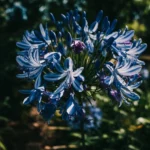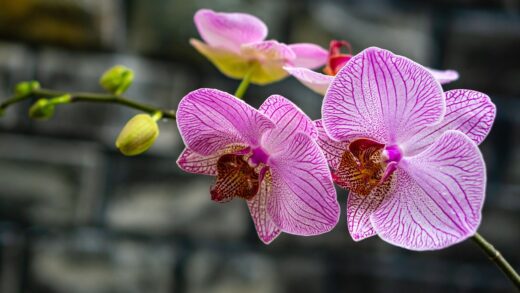Even the most diligently cared-for azaleas can occasionally face challenges from a variety of diseases and pests. A key part of expert-level cultivation is the ability to identify and effectively manage these issues before they cause significant damage. The best defense is always a good offense: a healthy, vigorous plant growing in its preferred conditions of acidic soil, proper moisture, and dappled sunlight is inherently more resilient and less susceptible to attack. However, being familiar with the common culprits, from sap-sucking insects to foliage-disfiguring fungi, allows for swift and targeted intervention, preserving the beauty and longevity of these cherished shrubs.
Integrated Pest Management (IPM) is the most sustainable and effective approach to dealing with azalea health problems. This strategy prioritizes preventative measures and biological controls, resorting to chemical treatments only when absolutely necessary. The foundation of IPM is regular monitoring. By taking the time to inspect your plants closely on a regular basis, paying attention to both the upper and lower surfaces of the leaves, the stems, and the flowers, you can catch problems at their earliest stages. Early detection often means that the issue can be resolved with simple mechanical removal or the use of gentle, low-impact treatments like horticultural oils or insecticidal soaps.
Understanding the life cycles of common pests and the conditions that favor certain diseases is also a critical component of proactive management. For example, knowing that spider mites thrive in hot, dry weather can prompt you to ensure your plants are well-hydrated during heatwaves to create a less hospitable environment. Similarly, understanding that many fungal diseases proliferate in damp, stagnant conditions will encourage you to practice selective pruning to improve air circulation within the plant’s canopy and to water at the base of the plant rather than overhead.
When intervention is required, it is crucial to accurately identify the specific pest or disease you are dealing with. A treatment that is effective against a fungal leaf spot will have no effect on damage caused by a chewing insect. Misidentification can lead to the unnecessary application of pesticides, which can harm beneficial insects, such as pollinators and predators that naturally help keep pest populations in check. Taking a clear photo or even a physical sample of the affected part of the plant to a local horticultural expert or extension service can be invaluable in obtaining an accurate diagnosis and a recommendation for the most appropriate and least toxic control method.
Common insect pests
One of the most pervasive pests of azaleas is the azalea lace bug (Stephanitis pyrioides). These small, flat insects have lacy, ornate wings and live and feed on the undersides of the leaves. Using their piercing-sucking mouthparts, they extract sap from the leaf cells. This feeding activity results in a distinctive stippling or bleaching of the upper leaf surface, giving it a faded, silvery, or yellowish appearance. A clear sign of their presence is the accumulation of dark, shiny spots of excrement on the leaf undersides. To manage lace bugs, you can start by spraying the undersides of leaves with a strong jet of water to dislodge them. For heavier infestations, applications of insecticidal soap or horticultural oil are effective, but thorough coverage of the lower leaf surfaces is essential for control.
Spider mites are another common sap-sucking pest, though they are technically arachnids, not insects. They are incredibly small and difficult to see with the naked eye, but their damage is noticeable as a fine, bronze-colored stippling on the leaves. In severe cases, you will observe fine webbing, particularly where the leaves join the stems. Spider mites thrive in hot, dusty, and dry conditions. Therefore, one of the best preventative measures is to keep your azaleas well-watered during periods of drought and to periodically wash the foliage with a spray of water to increase humidity and knock the mites off the plant. Horticultural oils and miticides can be used for more serious infestations.
Azalea caterpillars (Datana major) can cause significant and rapid defoliation. These black and yellow striped caterpillars feed in groups when they are young and can strip the leaves from a branch in a very short time. Fortunately, because they feed gregariously, they are often easy to spot. The most effective and environmentally friendly method of control is to simply prune off the infested branch and destroy the caterpillars. Since they typically appear in late summer or early fall, the damage they cause, while unsightly, usually does not harm the long-term health of a well-established plant.
Other pests that can affect azaleas include various species of scale insects, which appear as small, immobile bumps on the stems and leaves, and rhododendron borers, which are the larvae of a clear-winged moth that tunnel into the main stems, causing branch dieback. Scale insects can be managed with horticultural oil applications during their crawler stage or during the dormant season. Borers are more difficult to control; the primary strategy is to maintain plant health to prevent attacks and to prune out and destroy any infested branches that show signs of wilting or entry holes.
Fungal and other diseases
Petal blight is a deeply frustrating fungal disease that specifically attacks the flowers of the azalea, turning a beautiful display into a mushy, brown mess. Caused by the fungus Ovulinia azaleae, the first symptoms are small, pale, water-soaked spots on the petals. These spots rapidly enlarge, and the entire flower collapses into a slimy mass that clings tenaciously to the plant. The fungus produces small black resting structures called sclerotia, which fall to the ground and allow the disease to survive until the next flowering season. Control relies on strict sanitation: remove and destroy all infected flowers immediately. Replacing the mulch beneath the plant after flowering can help bury the sclerotia. In areas with a history of severe petal blight, preventative fungicide applications can be made as the flower buds begin to open.
Leaf gall, also known as azalea gall, is a visually startling but generally harmless fungal disease caused by Exobasidium species. It typically appears in the cool, moist weather of spring. The fungus causes the leaves, and sometimes flower parts, to become distorted, thickened, and fleshy, often turning a pale green or whitish color. While dramatic in appearance, leaf galls do not pose a serious threat to the overall health of the plant. The best method of control is to simply hand-pick or prune off the galls as soon as you see them, before they develop a white, powdery coating of spores which can spread the fungus. Be sure to dispose of the removed galls in the trash, not the compost pile.
Dieback is a more serious disease that can be caused by several different fungi, most notably Phytophthora and Botryosphaeria. The symptom, as the name suggests, is the sudden wilting and death of one or more branches while the rest of the plant appears healthy. Botryosphaeria often enters the plant through pruning wounds or other injuries. To manage it, you must prune out the diseased branch, cutting well back into healthy wood, identified by the lack of any brown discoloration in the center of the stem. It is crucial to sterilize your pruning tools with rubbing alcohol or a bleach solution between each cut to avoid spreading the disease. Promoting good air circulation and avoiding plant stress are key preventative measures.
Root rot is the most lethal disease for azaleas and is almost always a result of cultural practices, specifically planting in poorly drained soil or consistent overwatering. Caused by water molds like Phytophthora, the fungus attacks the roots, causing them to decay. Above ground, the plant will look like it is suffering from drought—wilting, yellowing leaves, and stunted growth—because the rotted root system can no longer function. By the time these symptoms are obvious, it is often too late to save the plant. Prevention is the only real cure. This reinforces the absolute necessity of planting azaleas in well-draining, acidic soil and of watering them appropriately.
Powdery mildew and leaf spots
Powdery mildew is a common fungal disease that appears as white, talcum-powder-like patches on the leaves and sometimes the new shoots of azaleas. It is most prevalent during periods of high humidity and moderate temperatures, particularly in shaded, crowded locations with poor air circulation. While it is generally not life-threatening to the plant, a severe infection can reduce photosynthesis, cause leaf distortion, and detract from the plant’s aesthetic appeal. Some azalea varieties are more resistant to powdery mildew than others, so selecting a resistant cultivar can be a good preventative strategy if this disease is common in your area.
To manage powdery mildew, improving air circulation is the first and most important step. This can be achieved by selectively pruning to open up the canopy of the azalea and by ensuring there is adequate spacing between it and neighboring plants. Avoid overhead watering, especially late in the day, as this can increase the humidity around the leaves and encourage spore germination. If treatment is necessary, horticultural oils and sulfur-based fungicides can be effective, but they must be applied at the first sign of the disease and reapplied according to the label directions.
Various other fungi can cause leaf spots on azaleas. These spots can vary in size, shape, and color—from brown to black to tan, sometimes with a purple border or a dark pinpoint center. While a few spots are merely a cosmetic issue, a heavy infection can lead to premature leaf drop, which can weaken the plant over time. The fungi that cause these spots typically thrive in the same wet conditions that favor other diseases. They overwinter on fallen leaves, so meticulous garden sanitation is a key part of control.
The management strategy for leaf spots is very similar to that for other fungal diseases. Rake up and destroy any fallen leaves from around the base of the plant in the autumn to reduce the amount of fungal inoculum for the following spring. Prune to improve air movement through the plant, and water the soil, not the leaves. In most cases, chemical controls are not necessary for leaf spot diseases on established plants. Simply focusing on good cultural practices is usually sufficient to keep these diseases from becoming a serious problem.
Prevention as the best strategy
Ultimately, the most effective way to deal with pests and diseases on your azaleas is to prevent them from becoming a problem in the first place. This preventative approach begins with selecting the right plant for the right place. Choose disease-resistant cultivars when possible and ensure you plant them in a location that provides the dappled sunlight, acidic soil, and excellent drainage they need to thrive. A plant that is stressed by its environment is an open invitation for pests and diseases to take hold.
Good cultural practices are the backbone of disease and pest prevention. Water your azaleas deeply but infrequently, always allowing the soil to dry slightly between waterings, and apply water directly to the root zone. Maintain a two- to three-inch layer of organic mulch to conserve moisture and regulate soil temperature. Feed your plants with a balanced, acid-forming fertilizer at the appropriate times to keep them vigorous, but avoid over-fertilizing. Prune correctly to maintain an open structure with good air circulation.
Sanitation in the garden is a simple but highly effective preventative measure. Promptly remove any diseased leaves, flowers, or branches as soon as you spot them. In the autumn, clean up and dispose of all fallen leaves from around the base of your azaleas, as this is where many fungal spores and insect eggs can overwinter. Always sterilize your pruning tools between plants, and especially after cutting out any diseased wood, to prevent the mechanical spread of pathogens from one plant to another.
Finally, encourage a healthy garden ecosystem. By avoiding the broad-spectrum use of chemical pesticides, you protect the beneficial insects that are your greatest allies in pest control. Ladybugs, lacewings, and predatory wasps, for example, are voracious predators of pests like aphids and mites. A garden that is rich in biodiversity, with a variety of flowering plants that provide nectar and pollen for these beneficials, will naturally have a more balanced and resilient pest-predator dynamic, reducing the likelihood of any single pest population getting out of control.



















